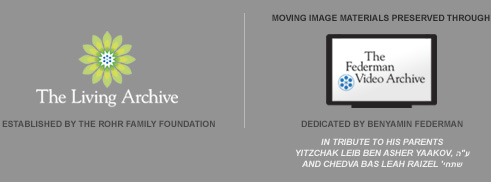|
|
 |
home | contact us | site map | Shop JEM |
 |
 |
 |
Since most of our recordings are stored on magnetic media – audio and video tape – the current problems facing the archiving community as a whole, are of serious concern to us.
Magnetic recording media were never meant to be preservation formats. Videotape is composed of magnetic particles applied with a binder to a polyester strip. The tape is stable only as long as the binder performs well, and manufacturers don’t guarantee tape stability for more than a decade.
The technology’s short shelf-life is compounded by other problems inherent in long term videotape storage, such as equipment dependence, binder instability, erasure, dropout, and “print-through.”
Over the decades, there have been well over one hundred different video formats introduced – some obscure, others used more widely, but regardless of format, brand, or even perfect storage conditions, videotape images, and the sounds on audio tapes – along with the tape itself – degrade.
All of these factors can limit a videotape’s ability to retain the image and audio data for long periods. Poor storage conditions, the cost of maintaining archival collections, and the difficulty of accessibility, are all critical problems for magnetic media archives around the world.
According to the Bay Area Video Coalition, a non-profit group specializing in video restoration issues, “From the moment of its manufacture, videotape begins to break down.”
The issues for archives that collect videotape were crystallized in the landmark Report on the State of Television and Video Preservation released by the US Librarian of Congress, James H. Billington. In his report, he paints a picture of losses already sustained and looming problems for an important part of America’s cultural heritage. “Sadly,” he writes, “we have not yet sought to preserve this powerful medium in anything like a serious or systematic manner.”
Over the past several decades, America’s audiovisual history and culture has been primarily entrusted to videotape, yet videotape was never designed as a permanent preservation/recording medium. Videotape is subject to a wide assortment of damaging chemical and physical problems. Format obsolescence also remains a real danger. More than 100 videotape formats have been introduced into the marketplace since 1956, and archivists do not have enough financial resources to copy the many valuable programs found on obsolete formats;
Among the problems described in the report:
- The nearly complete loss of almost three decades of local television news footage, primarily from the 1950s through late 1970s. As a result, no substantive moving image documentary record exists of many American cities, communities, events, locations, and personalities during this era. Local television stations discarded or routinely erased the material during this era to save storage space;
- The access difficulties faced by educators in finding and using television material in the classroom; and
- The financial inability of video artists and independent video producers to preserve their work.
The report continues:
In an ideal world, television and video materials are recorded on a durable preservation format and carefully managed and stored from the first day of production.
Unfortunately, the real state of television and video preservation is just the opposite of this ideal picture. Videotape is at best a medium-term storage format whose usefulness is shortened by adverse storage conditions and technological obsolescence. Cataloging is scarce, limited to a few institutions or selective parts of collections, making it difficult to know what existed, what still exists, and where it may be found.
|
 |
|
|
